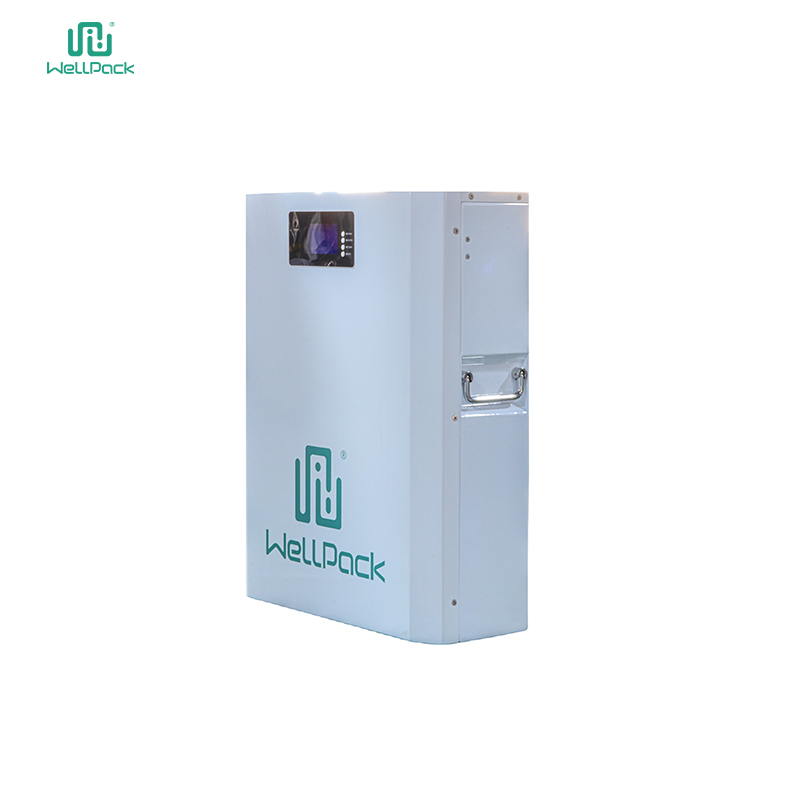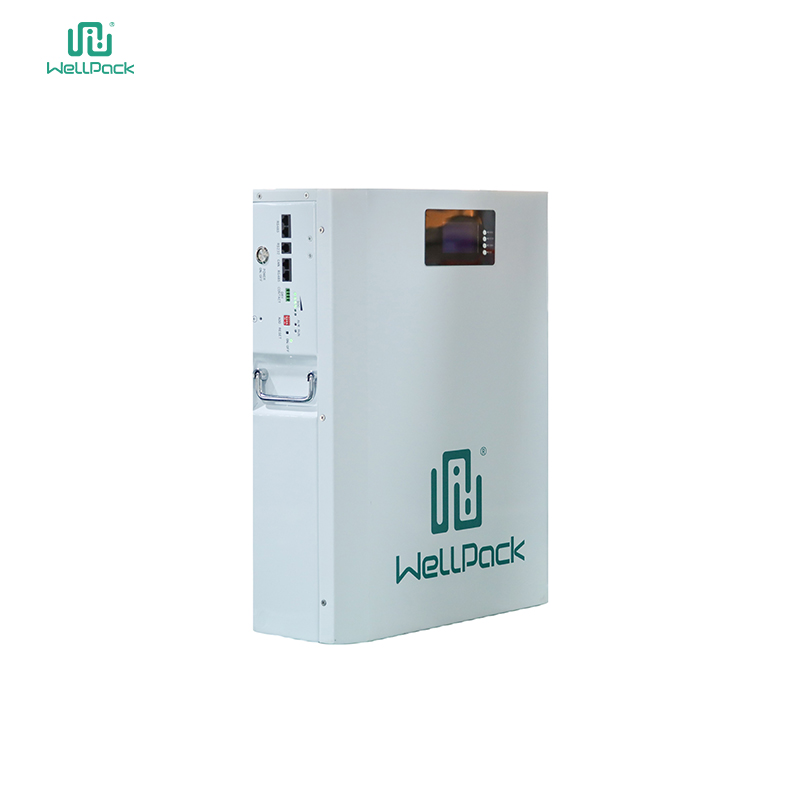
How to Solve the Insufficient Capacity of energy storage system in Solar Systems?
2024-11-16 18:00With the increasing global demand for renewable energy, solar systems have become the preferred energy solution for many homes and businesses. However, the efficient operation of solar systems relies on reliable energy storage devices. energy storage system, especially 12V 200Ah lithium energy storage system, play a crucial role in ensuring a stable energy supply. Yet, many users often face the issue of insufficient capacity of energy storage system, leading to solar systems failing to meet daily electricity demands. This article will explore the causes of this issue and provide practical solutions to help users optimize their solar systems and fully utilize the potential of energy storage system.
Table of Contents
1. Overview of Insufficient Capacity of energy storage system
2. Analysis of Main Causes of Insufficient Capacity 2.1. Unreasonable Battery Selection 2.2. Load Demand Exceeds Expectations 2.3. Insufficient Solar Power Generation 2.4. Inadequate Battery Management System (BMS)
3. Strategies to Solve Insufficient Capacity of energy storage system 3.1. Accurate Assessment of Electricity Demand 3.2. Selecting Suitable energy storage system 3.3. Optimizing the Solar Power Generation System 3.4. Upgrading the Battery Management System 3.5. Implementing Energy Management and Conservation Measures
4. Advantages of 12V 200Ah Lithium Battery in Solving Capacity Shortage 4.1. High Energy Density 4.2. Long Cycle Life 4.3. Efficient Charge and Discharge Performance 4.4. Multiple Safety Protections
5. Case Studies 5.1. Case One: Capacity Optimization of a Household Solar System 5.2. Case Two: Upgrade of Commercial Energy Storage System
6. Conclusion and Recommendations
1. Overview of Insufficient Capacity of energy storage system
In solar systems, the main function of energy storage system is to store the electricity generated during the day for use at night or during cloudy days. However, many users find that their existing energy storage system do not meet their actual electricity demands, leading to frequent power outages or reliance on external power sources. This not only affects the users' daily life and work efficiency but can also lead to equipment damage and energy waste. Therefore, addressing the issue of insufficient capacity of energy storage system is key to optimizing the performance of solar systems.
2. Analysis of Main Causes of Insufficient Capacity
To effectively solve the problem of insufficient capacity of energy storage system, it is essential to understand the underlying causes. The main factors leading to insufficient capacity include:
2.1. Unreasonable Battery Selection
Many users focus solely on the nominal capacity of energy storage system when selecting them, neglecting various factors in practical use. For instance, there are significant differences in performance between lead-acid batteries and lithium batteries in actual applications. The usable capacity of lead-acid batteries is typically only about 50% of their nominal capacity, whereas lithium batteries can utilize their nominal capacity more efficiently. If users fail to make reasonable selections based on system requirements and battery characteristics, they may face capacity shortage issues.
2.2. Load Demand Exceeds Expectations
Users often underestimate their actual electricity needs when designing solar systems. As lifestyles and work habits change, the number and variety of electrical appliances increase, leading to load demands exceeding initial expectations. For example, the addition of electric vehicle charging stations, smart home devices, or high-power appliances in households can significantly increase the load on the battery, resulting in insufficient storage capacity.
2.3. Insufficient Solar Power Generation
The capacity of energy storage system depends not only on their own capacity but also closely relates to the power generation capability of the solar system. If the number of solar panels is insufficient or their installation is poorly positioned, the actual power generation may fall short of expectations, failing to provide enough energy to replenish the storage batteries. Additionally, weather factors such as prolonged rainy or cloudy periods can also affect solar power generation, exacerbating the issue of insufficient storage capacity.
2.4. Inadequate Battery Management System (BMS)
The Battery Management System (BMS) plays a critical role in the performance of energy storage system. If the BMS is poorly designed and cannot effectively monitor and manage the charging and discharging process of the battery, it may lead to the battery not fully utilizing its capacity. For example, overly conservative overcharge and discharge protection settings can limit the usable capacity, or BMS malfunctions can prevent the battery from operating normally, both contributing to capacity shortages.
3. Strategies to Solve Insufficient Capacity of energy storage system
To address the above issues, users can adopt the following strategies to solve the problem of insufficient capacity of energy storage system and enhance the overall performance and reliability of solar systems.

3.1. Accurate Assessment of Electricity Demand
First, users need to conduct a comprehensive and accurate assessment of their electricity needs. This includes:
· Listing all electrical devices: Record all devices that require power, along with their power ratings and usage times.
· Calculating total electricity consumption: Based on the power ratings and usage times of devices, calculate the total daily electricity consumption.
· Considering future needs: Reserve some capacity to accommodate potential increases in electrical devices or loads.
By accurately assessing electricity demand, users can more precisely select the appropriate capacity of energy storage system, avoiding supply issues due to insufficient capacity.
3.2. Selecting Suitable energy storage system
Based on electricity demand, users should choose energy storage system that are appropriate in type and capacity. Key factors to consider when selecting energy storage system include:
· Battery Type: Lithium batteries (such as lithium iron phosphate batteries) offer higher energy density, longer cycle life, and higher charge/discharge efficiency compared to lead-acid batteries, making them suitable for high-performance solar systems.
· Capacity Selection: The capacity of energy storage system should be at least 1.2 times the daily electricity consumption to accommodate adverse weather conditions or unexpected high load situations.
· Depth of Discharge (DoD): Selecting batteries with a high depth of discharge capability allows for maximizing their storage capacity without affecting battery life.
· Cycle Life: Prioritize batteries with a long cycle life to reduce replacement frequency and maintenance costs over the long term.
The 12V 200Ah lithium battery, with its high energy density, long cycle life, and efficient charge/discharge performance, has become an ideal choice for energy storage system in many solar systems.
3.3. Optimizing the Solar Power Generation System
To ensure that energy storage system receive sufficient energy replenishment, optimizing the solar power generation system is crucial. Specific measures include:
· Increasing the number of solar panels: Depending on electricity demand and geographical location, appropriately increase the number of solar panels to enhance overall power generation capacity.
· Optimizing solar panel layout: Ensure that the installation position of solar panels maximizes sunlight exposure, reducing the impact of shading on power generation.
· Choosing efficient solar panels: Select high-efficiency solar panels to increase the power output per unit area, minimizing space requirements.
· Regular maintenance and cleaning: Keep solar panels clean to avoid dust and dirt affecting power generation efficiency.
By optimizing the solar power generation system, users can increase the power generation, providing ample energy replenishment for energy storage system and alleviating the issue of insufficient capacity.

3.4. Upgrading the Battery Management System
An advanced Battery Management System (BMS) can effectively monitor and manage the charging and discharging process of energy storage system, improving battery utilization efficiency. Specific measures include:
· Selecting a smart BMS: Choose a well-equipped smart BMS that can monitor battery voltage, current, temperature, and other parameters in real-time, ensuring the battery operates optimally.
· Optimizing charge and discharge strategies: Use the BMS to optimize charge and discharge strategies, avoiding overcharging and discharging to extend battery life and increase usable capacity.
· Fault detection and alarm: The BMS should have fault detection and alarm functions to promptly identify and address battery anomalies, ensuring safe system operation.
· Software updates and maintenance: Regularly update the BMS software to fix potential vulnerabilities, enhancing system stability and performance.
By upgrading and optimizing the Battery Management System, users can fully leverage the performance of energy storage system and address capacity shortages.
3.5. Implementing Energy Management and Conservation Measures
In addition to optimizing energy storage system and the solar power generation system, implementing effective energy management and conservation measures is also an important means of solving capacity shortages. Specific measures include:
· Intelligent energy management systems: Adopt intelligent energy management systems that dynamically adjust power distribution based on electricity demand and solar power generation conditions, ensuring the power supply needs of critical devices.
· Load priority settings: Based on the importance and frequency of use of devices, set load priorities to ensure critical devices receive power first, avoiding unnecessary energy waste.
· Using energy-efficient devices: Select high-efficiency energy-consuming devices to reduce overall electricity consumption and lower the load pressure on energy storage system.
· Energy recovery technology: In applicable scenarios, use energy recovery technology to feed some energy back into energy storage system, improving overall energy utilization.
By implementing energy management and conservation measures, users can utilize energy storage system more efficiently, alleviating capacity shortages.
4. Advantages of 12V 200Ah Lithium Battery in Solving Capacity Shortage
As a high-performance energy storage device, the 12V 200Ah lithium battery exhibits numerous advantages in addressing the issue of insufficient capacity in solar systems. Here are its main advantages:
4.1. High Energy Density
Compared to traditional lead-acid batteries, lithium batteries have a higher energy density. This means that lithium batteries can store more electrical energy within the same volume and weight. For solar systems, this allows users to achieve greater storage capacity within limited space, enhancing the overall efficiency of the system.
4.2. Long Cycle Life
Lithium batteries have a longer cycle life, often exceeding 2000 cycles. This longevity reduces the need for frequent replacements, lowering maintenance costs for users. Additionally, longer cycle life contributes to the overall cost-effectiveness of the energy storage system over time.
4.3. Efficient Charge and Discharge Performance
Lithium batteries feature higher charge and discharge efficiency compared to lead-acid batteries, meaning less energy is lost during charging and discharging processes. Higher efficiency ensures that users can make full use of stored energy, enhancing the overall performance of solar systems.
4.4. Multiple Safety Protections
Modern lithium batteries are equipped with advanced Battery Management Systems (BMS) that provide multiple safety protection mechanisms, including overcharge protection, over-discharge protection, short-circuit protection, and thermal protection. These safety features ensure reliable operation and prolong the service life of batteries, providing users with peace of mind.
5. Case Studies
5.1. Case One: Capacity Optimization of a Household Solar System
In a typical case of a household solar system, the user upgraded their energy storage battery from a lead-acid battery to a 12V 200Ah lithium battery. Additionally, they added more solar panels to their system. As a result, they successfully solved the issue of insufficient capacity, allowing them to power all household devices reliably without outages.
5.2. Case Two: Upgrade of Commercial Energy Storage System
A commercial establishment with high energy demands faced capacity issues with its existing energy storage system. By expanding the battery capacity and optimizing the solar power generation system, the establishment achieved significant improvements in power stability and reliability, effectively meeting their operational energy needs.
6. Conclusion and Recommendations
Insufficient capacity of energy storage system is a common issue faced by many users in solar systems. By accurately assessing electricity demand, selecting appropriate energy storage system, optimizing the solar power generation system, upgrading the battery management system, and implementing energy management and conservation measures, users can effectively solve this problem and achieve higher efficiency in energy utilization. With the right strategies in place, solar systems can operate smoothly, ensuring that users can enjoy reliable and sustainable energy solutions.
